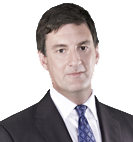A recent draft tax ruling by the Australian Tax Office (affectionately known as TR 2011/D3) has led to quite a bit of discussion around a new superannuation capital gains tax death trap. But what exactly is it and how can it be avoided?
In essence, the trap relates to the way superannuation funds are taxed.
In short, when a fund’s assets are in the pension phase, its investment earnings and capital gains are completely tax-free. However, when a fund’s assets are not in pension phase, tax of up to 15% is payable.
Importantly though, according to TR 2011/D3, the ATO’s longstanding view has been that in relation to a fund member, the fund will stop enjoying the benefits of being in the pension phase when that member dies – unless that pension automatically continues to a beneficiary.
Typically, in situations where a member is survived by a spouse or young child this is not so much of a problem because a death benefit pension can generally be commenced in favour of the beneficiary using the deceased member’s benefits. As such, the fund can be returned to pension phase in a relatively short period of time.
The trap
However, not everyone is eligible to receive a pension. Consider a situation where the deceased member is only survived by an adult child. In this situation, according to laws governing superannuation, the fund is not allowed to pay a death benefit pension to the adult child and so a lump sum is the only option available.
Inevitably, in order to make this lump sum death benefit, the fund will need to either sell an asset to generate cash or physically transfer the asset out of the fund – in both cases this is a trigger for capital gains tax (CGT).
Now, if this trigger occurs while the fund is in the pension phase, CGT is not payable. However, given the ATO’s clarified view – that is, that a pension generally ceases following the death of the member – this means the CGT trigger has occurred outside of the pension phase because the member has died!
Example
Mark has an SMSF that is in the pension phase. The main asset of the fund is a residential property the fund has owned for over 10 years. The property was purchased for $200,000 and is now worth $650,000.
If Mark’s SMSF sells the property while he is alive and in the pension phase, there would be no CGT. But what if Mark passes away?
- If he is survived by his spouse, Martha, their SMSF could elect to pay Martha a death benefit pension. And, if the fund were to then sell the property, the fund would still be in the pension phase resulting in no CGT.
- If Mark is only survived by his adult son Jeremy, then the SMSF would have no choice but to pay Mark’s death benefit to Jeremy as a lump sum. This would involve disposing of the property (either by selling it or by transferring it out of the fund). More significantly, this will result in a CGT liability to the fund of around $45,000!
Voila! There you have it – the CGT death trap!
How to avoid the trap
As our example highlights, and where it is appropriate to do so, selling the property while in the pension phase (e.g. during Mark or Martha’s lifetimes) would avoid this liability arising in the first place – although it must be said that this would be much easier if we were dealing with less bulky (and less emotion-charged) assets, such as shares.
If it’s not appropriate to sell the property during the pension phase, then there are opportunities to maximise the tax deductions available to the SMSF.
Tax deductions
If Mark held insurance in his SMSF, the fund would be able to make an election not to claim a tax deduction for premiums paid in the year of his death, but instead claim a portion of the actual death benefit as a tax deduction.
Alternatively, Mark’s SMSF could establish a plan to provide an anti-detriment payment, which in turn would create a tax deduction for the fund. However, as the ability to make an anti-detriment payment requires an appropriate funding mechanism (such as a reserve) this involves some forward-planning.
Both these tax deductions are relatively large and can be used to reduce the fund’s CGT liability.
Another approach could be to retain the property within the fund itself – avoiding the CGT trigger occurring. The key to this approach is creating enough liquidity within the fund so that Mark’s death benefit could be paid out using other assets – leaving the property untouched within the fund. This could be as simple as Jeremy joining the fund and growing his account balance, or it could involve the use of a specifically tailored insurance arrangement.
Important information: This content has been prepared without taking account of the objectives, financial situation or needs of any particular individual. It does not constitute formal advice. For this reason, any individual should, before acting, consider the appropriateness of the information, having regard to the individual’s objectives, financial situation and needs and, if necessary, seek appropriate professional advice.
Also in the Switzer Super Report
- Peter Switzer: This will be an OK year for long-term investors
- Charlie Aitken: There’s little growth in top 10 stocks this year
- Ron Bewley: How market cap impacts portfolio performance

